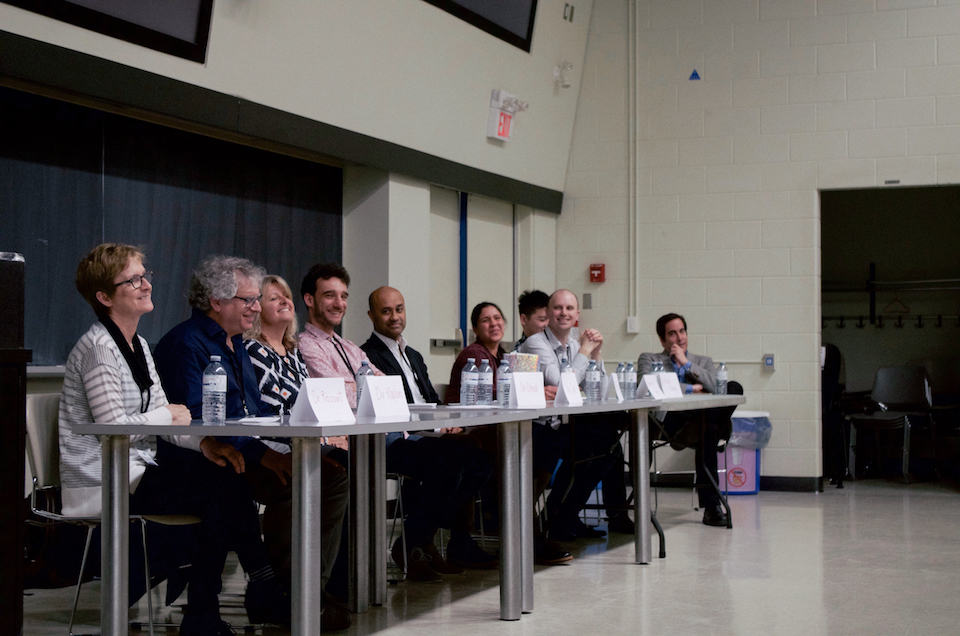Tiny heart cells pulsating on a chip, damaged brains being reborn and retinas re-growing by themselves to reverse blindness were just a few things discussed at a conference hosted by the Student Society for Stem Cell Research (SSSCR) on March 12th.
The conference focused primarily on the potential for fast-growing stem cell technology to dictate the future of medicine. Titled “Stem Cells: The Future of Medicine,” the conference invited some of the greatest minds in U of T’s stem cell community to discuss the implications of their research and to respond to audience questions about developments in the field.
The conference opened with a talk by Dr. Janet Rossant, who discussed the procedure of creating stem cells from somatic (bodily) cells. She also discussed the technical advances in stem cell research by other research groups.
The conference also featured Dr. Milica Radisic, whose team has recently developed a micro-sized “heart-on-a-chip.”
Dr. Cindi Morshead, whose research identified a drug that induced stem cells in the brain to recreate damaged and dead brain parts, also made a presentation.
The event was later divided into concurrent sessions covering the most recent advances in regeneration, cancer technology, and stem cell biology at the University of Toronto.
Much of the research discussed is currently applicabl. In fact, Dr. Morshead’s research had already moved into clinical trials to help children with traumatic brain injuries.
Although some research is still a few years from clinical practice, the common thread was that all of these projects would come to fruition eventually.
“We have examples of going from bench to bedside within a year… going from making mice smarter to trying to treat kids with traumatic brain injuries in a very short amount of time,” said Dr. David Kaplan of the Department of Molecular Genetics during the panel discussion. “The challenge is even easier at a place like SickKids, where the clinicians and scientists all work together [the doctors] go to researchers’ talks, and they say ‘I want to get that treatment in my clinic as soon as I can.’”
Dr. Kaplan addressed a technical and regulatory challenge in translating this research into care for patients. “For us [researchers], we try to work with the same drugs that are already on the medicine cabinet. We try to see if they do good things to stem cells, that we can then see if they’ll repair damage,” Kaplan said. “The challenge is going to be cell transplantation… this is an easier barrier.”
While established researchers were given the chance to speak, many future hopefuls were in attendance.
“I volunteer at St. Joseph’s Hospital and help patients with Alzheimer’s. I actually came here today hoping to take something away related to that,” said Sofia Martin, a first-year U of T life-sciences student studying life sciences. “I really think that stem cells are very promising to cure [Alzheimer’s] or slow it down, so I won’t see my [future] patients have this degeneration.”
The SSSCR is an international association of students whose aim is to foster understanding and promote the progress of stem cell research.
The U of T chapter was founded in 2014. Their other activities include visiting high schools and organizing academic talks and research workshops.
Speaking to the future of the conference, Ghazal Haddad, the president of the SSSCR, emphasized the importance of bringing disciplines together to start a discussion.
“This year we had scientific talks and research. We’re hoping that the next conference we will have policy makers and people to debate [the] ethical aspects of the research in order to open this field to humanity students and social science students… The community is interested in stem cell research and it’s important for everyone to discuss [how to] make important decisions about the future of medicine.”
Correction (March 30th, 2016): An earlier version of this article misidentified the conference’s keynote speaker.


